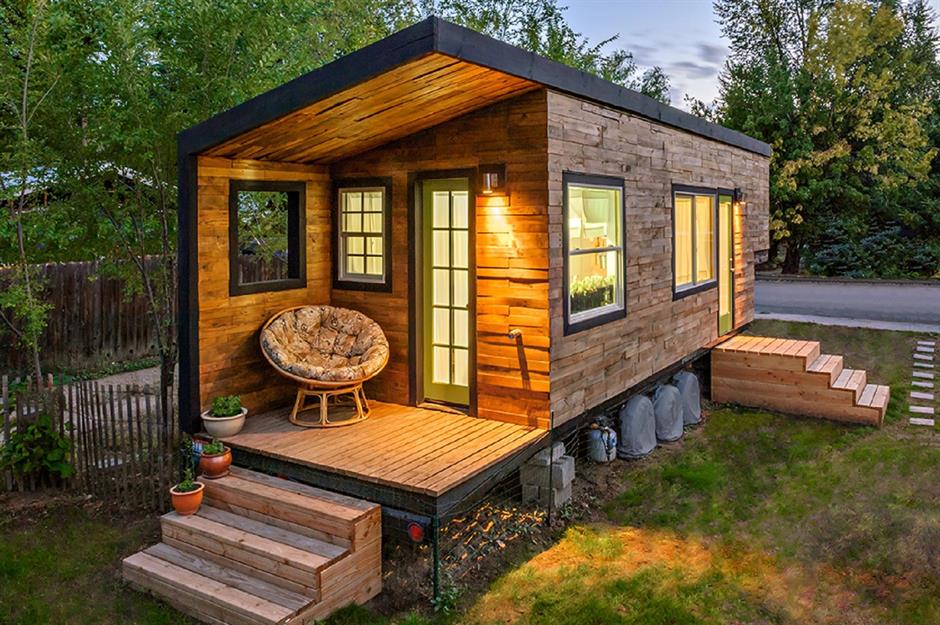Budgeting for a minimalist tiny house involves careful consideration of various factors to ensure that costs are managed effectively. From initial design and construction expenses to ongoing maintenance and utilities, every aspect of the tiny house project must be accounted for to avoid overspending and financial strain.

Estimating Construction Costs
The construction costs for a minimalist tiny house can vary significantly depending on factors such as size, materials, location, and labor rates. It’s essential to research and obtain quotes from contractors or builders to get an accurate estimate of construction expenses. Consider the cost of materials such as lumber, insulation, roofing, windows, and siding, as well as labor costs for construction and installation.
Factoring in Design and Planning Fees
Design and planning fees are another consideration when budgeting for a minimalist tiny house. If you’re working with an architect or designer to create custom plans for your tiny house, be sure to budget for their services. Design fees can vary depending on the complexity of the project and the level of customization required, so it’s essential to discuss fees upfront and factor them into your budget.
Accounting for Land Acquisition Costs
In addition to construction expenses, you’ll need to budget for land acquisition costs if you plan to purchase property for your tiny house. Consider factors such as location, zoning regulations, utilities, and site preparation when evaluating potential land options. Be sure to factor in the cost of land purchase, closing costs, permits, and any necessary site improvements when calculating your overall budget.
Planning for Utilities and Infrastructure
Utilities and infrastructure costs are often overlooked but are essential considerations when budgeting for a minimalist tiny house. You’ll need to ensure access to essential utilities such as water, electricity, and sewage, which may require additional expenses for connection fees, permits, and infrastructure improvements. Factor in ongoing utility costs such as water, electricity, propane, and internet service when planning your budget.
Budgeting for Interior Finishes and Furnishings
Interior finishes and furnishings are another expense to consider when budgeting for a minimalist tiny house. While minimalist design principles typically involve fewer furnishings and simpler finishes, quality materials and thoughtful design choices can still add up. Budget for essentials such as flooring, cabinetry, countertops, appliances, lighting, and fixtures, as well as any furnishings or decor items to personalize your space.
Allocating Funds for Ongoing Maintenance and Upkeep
Ongoing maintenance and upkeep are essential aspects of tiny house ownership that should not be overlooked when budgeting. Set aside funds for routine maintenance tasks such as cleaning, repairs, and upkeep of mechanical systems and appliances. Additionally, consider long-term maintenance costs such as roof replacement, exterior painting, and landscaping to ensure that your tiny house remains in good condition over time.
Considering Financing Options
Financing a minimalist tiny house project can be challenging, as traditional mortgage lenders may be hesitant to finance non-traditional housing types. Explore alternative financing options such as personal loans, RV loans, or tiny house-specific financing programs to secure funding for your project. Be sure to research interest rates, terms, and eligibility requirements to find the best financing option for your needs.
Building in Contingency Funds
Building in contingency funds is crucial when budgeting for a minimalist tiny house, as unexpected expenses can arise during the construction process. Set aside a portion of your budget for contingency funds to cover unforeseen costs, delays, or changes to the project scope. Having a buffer in place will help mitigate financial stress and ensure that your tiny house project stays on track.
Tracking Expenses and Adjusting as Needed
Once your budget is established, it’s essential to track expenses closely and adjust as needed throughout the project. Keep detailed records of all expenditures and regularly compare actual costs to your budgeted amounts. If expenses exceed your initial budget, identify areas where costs can be reduced or reallocated to stay within your financial constraints. Flexibility and adaptability are key when managing a tiny house budget.
Conclusion
In conclusion, calculating the budget for a minimalist tiny house requires careful planning, research, and consideration of various factors. From construction costs and design fees to land acquisition expenses and ongoing maintenance, every aspect of the project must be accounted for to ensure financial feasibility. By understanding the basics of tiny house budgeting, allocating funds for essential expenses, considering financing options, building in contingency funds, and tracking expenses closely, you can successfully navigate the budgeting process and bring your minimalist tiny house dream to life.